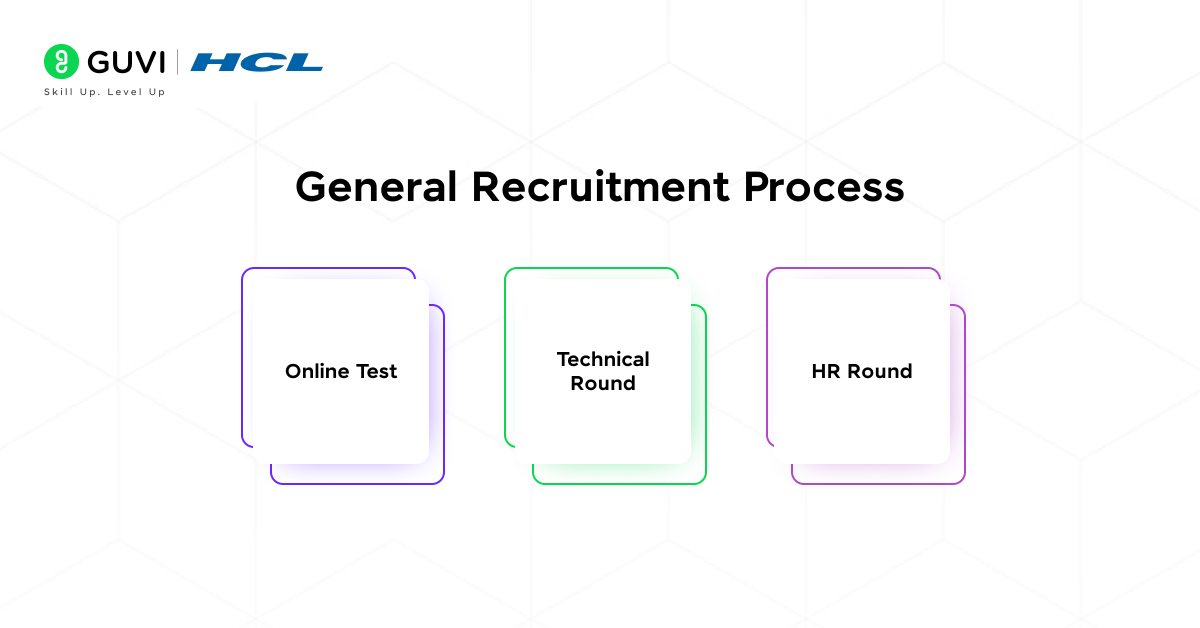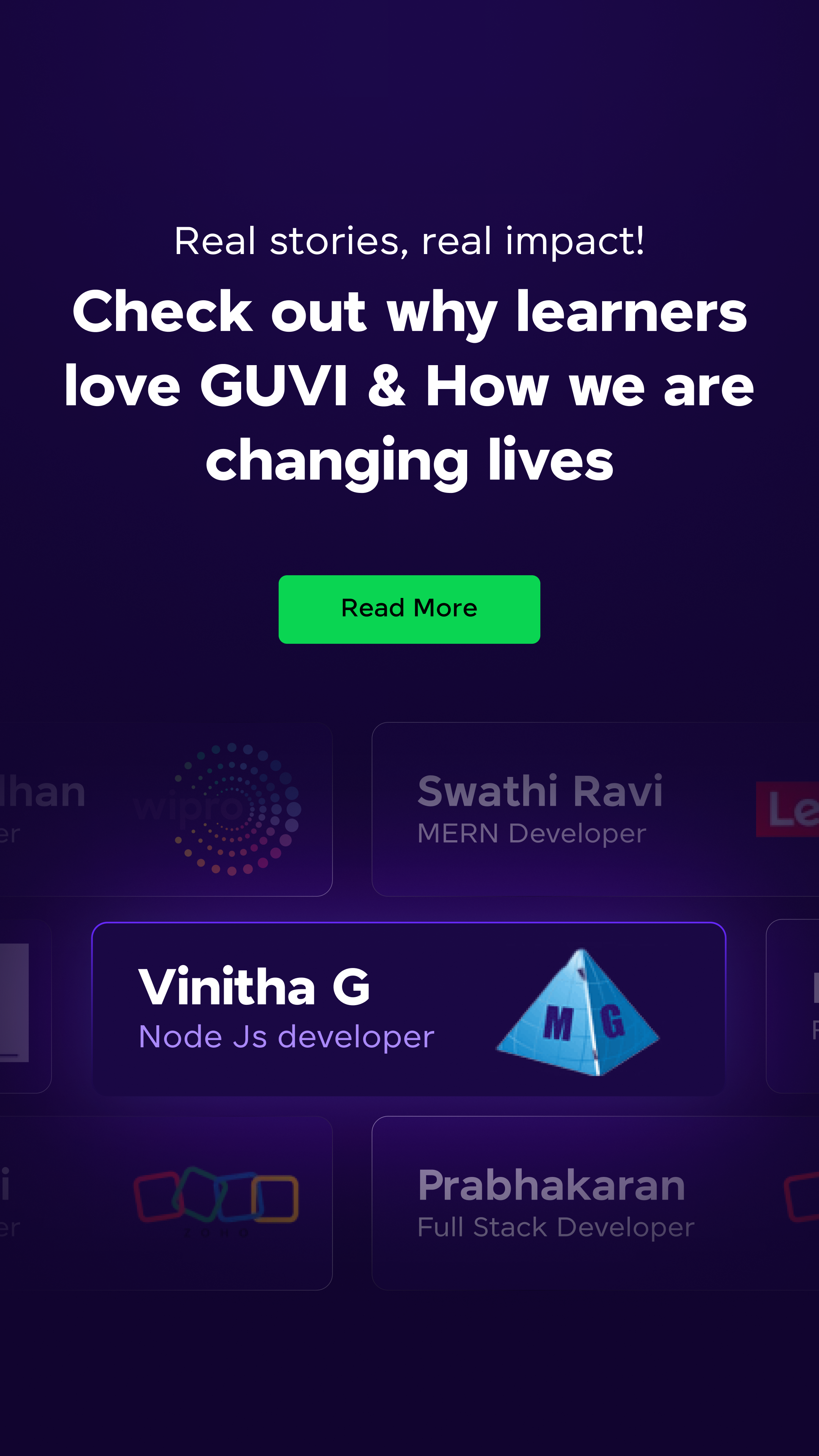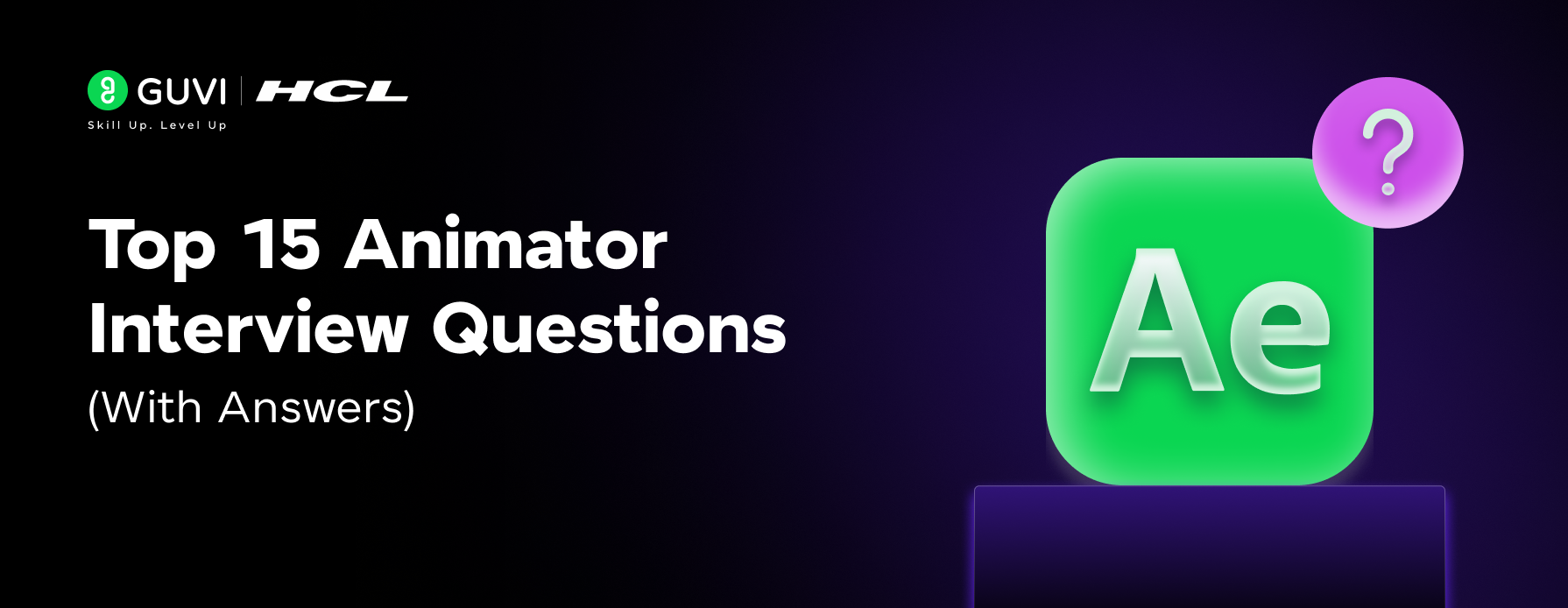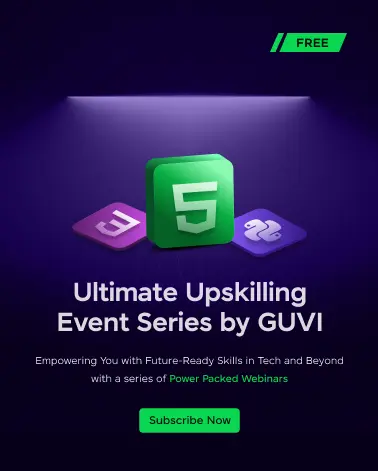
Revealing The Secrets of Wipro Interview Questions
Mar 26, 2025 10 Min Read 3228 Views
(Last Updated)
Are you preparing for an upcoming interview with Wipro or Are you planning to work with Wipro in future? Then, this might be the right blog for you!
This blog is designed to provide you with detailed information on Wipro’s hiring process, revealing the secrets behind their interview questions and frequently asked Wipro interview questions. We will also guide you through their questing pattern along with sample questions and the tips to crack it. So, stay tuned till the very last end!
Table of contents
- General Recruitment Process
- Online Test (Sample Questions Included)
- Logical Reasoning
- Quantitative Aptitude
- Verbal Ability
- Coding and Programming Concepts
- Technical Round (Sample Questions Included)
- HR Round (Sample Questions Included)
- Conclusion
General Recruitment Process

As a first step, let’s dive into the general recruitment process of Wipro. Wipro is a leading global consulting and business process services company. It is known for its innovation and commitment to sustainability. It continues to play a major role in the IT service sector. To get into Wipro, we should know the recruitment process so that it will be easy to crack the interview in one go. Wipro recruitment usually has three rounds, they are:
- Online Test
- Technical Round
- HR Round
Let’s look into each round briefly with the question pattern, concepts and sample questions.
Online Test (Sample Questions Included)

The first round is an online test. All the candidates who applied for Wipro must pass the initial assessment that is conducted online. The total duration of the test is approximately 2 hours which covers various topics such as quantitative, qualitative aptitude and verbal questions to test the candidate in each area. Let’s look into the online test pattern, number of questions and the timing for each section.
- Section 1: Logical Reasoning
- This section has around 14 questions that need to be answered within 14 minutes.
- Section 2: Aptitude (Quantitative)
- Quantitative aptitude carries around 16 questions that need to be answered within 16 minutes.
- Section 3: Verbal Ability
- This section consists of 22 questions that must be answered within 18 minutes.
- Section 4: Coding
- The coding section includes 2 problems which need to be solved within 60 minutes.
- Section 5: Essay Writing (English)
- The candidate needs to write an essay on the given topic within 20 minutes.
Now that you know the test pattern, let’s dive deeper into each section and see the concepts you can expect in the tests along with some sample questions.
Logical Reasoning
The first section is Logical Reasoning. Reasoning is the process of structured thinking to evaluate information, identify patterns, and make conclusions based on given premises or facts. In this section, you can expect questions from the below-mentioned topics.
- Blood Relation
- Syllogism
- Number Series
- Clock Puzzles
- Analogies
- Water and Mirror Images
- Mathematical orders
- Data sufficiency and interpretation
Sample Questions
1. If A + B means A is the husband of B, A#B means A is the brother of B, A@B means B is the son of A and A$B means B is the daughter of A, then from the given options, choose what is the meaning of
R # P + Q @ S $ T
- R is the grandfather of S
- P is the uncle of T
- S is the grandson of P
- T is the granddaughter of Q
- None of the above
Answer: Option D
T is the granddaughter of Q
2. Looking at the portrait of a man, Sandeep said, “His mother is the wife of my mother’s only son. Brothers and sisters, I have none.” How was the man in portrait was related to the Sandeep’s Wife?
- Uncle
- Nephew
- Son
- Cousin
- None of above
Answer: Option C
3. In a family, Ustad is the father of Hussain who is the son of Devi. Devi is the daughter of Milind and Vishwa. Vishwa is the grandfather of Hussain. How is Ustad related to Milind?
- Son-in-law
- Granddaughter
- Father
- Mother-in-law
- None of the above
Answer: Option A
4. If the positions of the first and second letters of all the words are interchanged, how many words will form meaningful English words?
- None
- Three
- One
- Two
Answer: Option A
F Words will be AFN, OHP, EGT, UCB, IMD, none of these is a meaningful word. So, the correct answer is option A
5. If all the letters in each of the words are arranged alphabetically (within the word), how many words will remain unchanged?
- Two
- Three
- One
- None
Answer: Option C
FAN – AFN
HOP – HOP
GET – EGT
CUB – BCU
MID – DIM
HOP remains same
Therefore, the correct answer is option C.
6. If the first letter of all the words is changed to the next letter of the English alphabetical series, how many words will have more than one vowel? (Same or different vowel)
- None
- Three
- Two
- More than three
- One
Answer: Option E
From the given information, we have Words will be GAN IOP HET DUB NID, out of these five words, only IOP has two vowels. Therefore, the correct answer is option E
7. Which of the following will come next in the following series?
a z a b y a b c x a b c d w a b c d
- f
- u
- a
- y
- e
Answer: Option E
a, z, ab, y, abc, x, abcd, w…next will be abcde. So, the next alphabet will be ‘e’ Hence, the correct answer is option E.
8. In a certain code language, TONIC is coded as ‘CINOT’ and ‘SCALE’ is coded as ‘ACELS’. In the same code language, ‘PLANK’ will be coded as
- KNALP
- AKNLP
- AKLNP
- AKPNL
- Cannot be determined
Answer: Option C
Letters are alphabetically arranged. Therefore, ‘PLANK’ will be coded as ‘AKLNP’. So, the correct answer is option C.
9. Which of the following will come in the place of the question mark (?) in the following series based on the English alphabetical order? YS RM LH? CA
- DG
- FD
- GD
- DF
Answer: Option C
Here we have
Y(25) to S(19)…difference -6
R(18) to M (13)..difference -5
L(12) to H(8)…..difference -4
Similarly. G(7) to D(4) …….difference -3
C(3) to A(1) ………difference -2
So, the correct answer is option C.
10. How many such pairs of letters are there in the word NEUTRAL, each of which has as many letters between them in the word (in both forward and backward directions) as they have between them in the English alphabetical series?
- Two
- Three
- None
- One
Answer: Option B
We have three such pairs i.e. NR, EA, and UT. Hence, the correct answer is option B.
Quantitative Aptitude
The next section is Quantitative Aptitude. Quantitative aptitude refers to the ability to solve mathematical problems quickly and accurately. It mostly involves mathematical concepts. Some of the common topics you will encounter in online tests are given below.
- Ratio and Proportion
- Pipes and Cistern
- Quadratic Equations
- Percentages
- Compound and Simple Interest
- Partnership
- Probability
- Mensuration
- Time and Distance
- Time and Work
- L.C.M and H.C.F
- Permutations and Combinations
Make sure to have a decent knowledge of these concepts and practice a lot of questions to solve the questions faster and more accurately during the tests.
Sample Questions
- The sum of a number and the two numbers preceding it is equal to 30. Find the number:
- 10
- 11
- 9
- 8
Answer: Option C. Number is 9, As 9 +10+11=30
- Sanjay invested an amount of Rs 16,000 for two years on compound interest and received an amount of RS 17,640 on maturity. What is the rate of interest per annum?
- 4%
- 5%
- 8%
- Data Inadequate
Answer: Option B. Amount =P(1+r/100)2 17640/16000= (1+r/100)2 441/400= (1+r/100)2 => (21/20)2= (1+r/100)2 R=5%
- Six pipes are fitted to a water tank. Some of these are inlet pipes and the others are outlet pipes. Each inlet pipe can fill the tank in 9 hours and each outlet pipe can empty the tank in 6 hours. On opening all the pipes, an empty tank is filled in 9 hours. How many inlet pipes are there?
- 2
- 4
- 3
- 5
Answer: Option B
x / 9 – y / 6 = 1/9;
2x – 3y = 2
So, We can compute that x = 4 and y = 2.
Thus, Inlet pipe = x = 4.
- A reservoir is provided by two pipes A and B. A can fill the reservoir 5 hours faster than B. If both together fill the reservoir in 6 hours, the reservoir will be filled by A alone in
- 12 hours
- 8 hours
- 10 hours
- 11 hours
Answer: Option C
If x is the speed then speed of A= x + 5 and B = x. Time taken by A and B will be x and x + 5 resp.
1/x + 1/x + 5 = 1/6 ; x2 – 7x – 30 = 0 x = -3 or x = 10.
Since, time can’t be negative, x =10.
- A dealer buys dry fruits at the rate of 100, 80 and ` 60 per kg. He bought them in the ratio 12 : 15 : 20 by weight. He in total gets 20% profit by selling the first two and at last he finds he has no gain or no loss in selling the whole quantity which he had. What was the percentage loss he suffered for the third quantity?
- 30%
- 40%
- 20%
- 50%
Answer: Option B
Total quantity rate =
(12 * 100 + 15 * 80 + 20 * 60) = 3600
For first 2 quantity, (12 * 100) + (15 * 80) = 2400
But he gets 20% profit = 2400 * 1.2 = 2880
So the third quantity = 3600 – 2880 = 720
Actual third quantity rate = 20 * 60 = 1200
So, Loss suffered = (1200 – 720) / 1200
= 480/1200 = 40
- How many kgs of flour worth Rs 25 per kg must be blended with 30 kgs of flour worth Rs 30 per kg so that by selling the blended variety at Rs 30 per kg there should be a gain of 10%?
- 32 kg
- 40 kg
- 36 kg
- 42 kg
Answer: Option C
(25X+30×30 )/(X+30)=300/11
So, X=36
- A boat takes 19 hours to travel downstream from point A to point B and comes back to a point C midway between A and B. If the velocity of the stream is 4 km/h and the speed of the boat in still water is 14 km/h, what is the distance between A and B?
- 200 km
- 180 km
- 160 km
- 220 km
Answer: Option B
Speed of boat for downstream = 14 + 4 = 18 km/hr
Speed of boat for upstream = 14 – 4 = 10 km/hr
Distance = x
x / 18 + (x /2)/10 = 19
So, x = 180 km
- The speed of a boat in still water is 4 km/h and the speed of current is 2 km/h. If the time taken to reach a certain distance upstream is 9 hours, the time it will take to go the same distance downstream is
- 3.5 hours
- 2.5 hours
- 2 hours
- 3 hours
Answer: Option D
Upstream speed of a boat = 4 – 2 = 2 km/hr
Downstream speed of a boat = 4 + 2 = 6 km/hr
Suppose time taken = x
Then for Upstream case: 9 = x / 2 So, x = 18 km
Now for downstream case :Time = 18/6 = 3 hrs
- In a stream running at 2 km/h, a motorboat goes 10 km upstream and back again to the starting point in 55 min. The speed of the motorboat in still water is
- 22 km/h
- 21 km/h
- 20 km/h
- 24 km/h
Answer: Option A
Let “x” be the speed of Motorboat in still water
Distance = 10 km; Time = 55/60 hrs
So, For upstream, the speed of the motorboat = x – 2
And, For downstream, the speed of motorboat = x + 2
55 / 60 = 10/ (x – 2) + 10/(x + 2) So, x = 22.
- A man can row 4.5 km/h in still water and he finds that it takes him twice as long to row up as to row down the river. The speed of the stream is
- 2.5 km/h
- 1.5 km/h
- 2 km/h
- 1.75 km/h
Answer: Option B
Let the speed of the stream be S and x be upstream speed.
Then for downstream, 4.5 + S = D
And for upstream, 4.5 – S = U
So, we get D + U = 9
But, it takes him twice as long to row up as to row down the river.
3U = 9 ; U = 3. Thus, 4.5 – S = 3
S=1.5 kmph
Verbal Ability
The next section is verbal ability. In this section, they will test your English proficiency by reading comprehension-type questions. They will provide you with a medium to large size paragraph followed by a set of questions that need to be answered. You need to choose the answer to those questions by reading the paragraph provided. Let’s see some example questions and the important concepts.
- Synonyms and Antonyms
- Prepositions and Articles
- Gerunds
- Homophones
- Identify the errors in a sentence
- Rearranging of sentences
- Prefix and Suffix
- Fill in the blanks
- Idioms and Phrases
- Sentence Correction
- Plural Forms
- Substitution
Sample Questions
- DIRECTIONS for questions 1 to 4: Study the passages below and answer the questions that follow each passage.
Like most teenagers, I dreamt of one day having my name in lights. And perhaps an interview in National Geographic for my work with Rwanda’s apes. Maybe an Oscar for my portrayal as a feisty heroine in an epic drama, preferably set in India. Or a Nobel Prize for poetry, which I’d collect in Stockholm wearing a black turtleneck.
Suffice to say, none of these has come true. I prefer dogs to gorillas. My poetry is used to line the bottom of my drawer. And I’ve never been to India. Sure, as a writer, I get my name in the occasional glow of a nine-point byline, but the difference between Oscars and Nobels and Helvetica typeface is that the former is all about me; the latter is by me.
With the advent of the internet, all that has changed. Like most users, I am a gratuitous googler, squandering valuable work time looking up invaluable topics such as how to clean my dog’s teeth, how to cook Risotto, and myriad medical ailments, including tough heels (definitely cancer), lumps on elbows (certainly cancer) and easy bruising (absolutely cancer). But among these endless searches will be a valuable constant: my own name, Helen Walne.
In the great scheme of things, I am not very important. I have never been medically paroled from jail, I haven’t gone to rehab and I am not about to marry a famous celebrity. My husband has gently suggested that I seek psychological help for my addiction. I google myself every day. And yes, there are times when, like a bulimic digging into the second bucket of Kentucky Fried Chicken, I feel out of control, gorging on blogs, images, and news and glimpses of myself.
In cyberspace, there is no such thing as big fish in little ponds or little fish in big ponds. Instead, it’s one swirling, bubbling swamp of amoebae all gasping for their own gulp of air. And for the ego surfers, it’s important we float on the surface. Research has found that 47% of internet users have performed self-googling more than double the number from 5 years ago.
I have realized that like wine, watching soap operas, and eating pizza, moderation is the key to virtual vanity – and keeping it to yourself is paramount. When you start dabbling in the competitive realms of rival surfing you are sure to start sinking under the flotsam of self-doubt. There is always someone out there with a higher ranking, a better picture, a bigger job.
Refer the above passage and answer the following questions:
1. According to the passage, the author
I. received an Oscar for her portrayal as a feisty heroine in an epic drama.
II. feels that moderation is the key to well-being in cyberspace.
III. feels that she is the center of all she checks in the net.
Options
I, II, and III are correct.
I and II are correct.
II and III are correct.
I and III are correct.
Answer: Option C
Here, the first is factually incorrect.
2. It can be inferred from the passage that you have gone too far when you start googling your name multiple times daily. Competitive rival surfing is the best way to increase your self-esteem.
Being addicted to self-googling is the way forward in the 21st century. The advent of the internet has helped in creating ‘a somebody’ out of ‘a nobody’.
Answer: Option D
We can’t infer that somebody has gone far if one starts googling one’s name multiple times. Nothing can be inferred about increasing self-esteem. So, option C is out of scope.
3. According to the passage,
A. Helen Walne is a patient with cancer.
B.Helen Walne is a megabyte megalomaniac.
C. Helen Walne thinks that constant rival surfing is the best way to improve self-worth.
D. Helen Walne is a conscientious worker.
Answer: Option B
Megalomania is an obsession with doing extravagant or grand things. Helen Wayne is also obsessed with this. And the other options are out of scope.
4. According to the passage, all of the following are not true, except
Helen Walne received a prize for wearing a turtle neck.
Helen Walne’s husband feels she needs help to get out of her addiction.
In reality, there is very little difference in the number of internet users today and five years ago.
Rival surfing gives a better job.
Answer: Option B
Refer to 1st para line “My husband has gently…..addiction.”
5. The question below has a group of sentences marked A, B, C, D and E. Arrange these to form a logical sequence.
A. The upsurge of public activism against the setting up of Special Economic Zones, which eventually forced the State government to announce the scrapping of all 15 such projects, is an impressive case in point.
B. Early last year, a similar agitation coerced the government into calling for a revision of the Goa Regional Plan 2Q11, a controversial document that opened up large swathes of land, including green belts and coastal stretches, for construction.
C. The broad-based agitation against SEZs has demonstrated the power of popular protest in the State.
D. Those opposed to the projects had questioned the propriety of the government acquiring large tracts of land and then selling them to promoters at low prices.
E. A coastal State with an area of 3,700 square kilometers and a population of about 1.4 million, Goa has always been extremely sensitive to the impact of unrestrained economic development.
Options
- BCDEA
- CDEAB
- EABCD
- DABCE
Answer: Option C
Sentence E introduces ‘Goa that has been extremely sensitive to the impact of unrestrained economic development’. An example of the upsurge. B carries the idea forward with ‘a similar agitatio’.
Coding and Programming Concepts
The next important section is coding. This section has a heavy weightage of score. They will provide you with the problem statement and IDE asking you to code the solution to the question in the programming language of your choice. In general, most of the questions will be from C and C++. Sometimes, they may even ask for a combination of coding and programming concepts as mcq. You can expect questions from the below concepts.
- C, C++, Python, Java
- Databases
- Arrays
- String Manipulation
- Linux
- Operating System
- Searching and Sorting
- Networks
Wipro Interview Questions
- Find the distinct elements in a given array. (Assume the size of an array n<=20)
Sample Input: 9 = size of an array
2 3 4 5 6 1 2 3 4 = array elements
Sample Output:
2 3 4 5 6 1
// C program to print all distinct elements in a given array
| include void distict_elements(int a[], int n); int main() { int size_array, i, arr[20]; // Get the array size scanf(“%d”, &size_array) // Get the array elements for(i=0; i<size_array; i++) { scanf(“%d”, &arr[i]); } // Function call to print the distinct elements in an array distict_elements(arr, size_array); return 0; } void distict_elements(int a[], int n) { int i, j; // Pick all elements one by one for (i=0; i<n; i++) { // Check if the picked element is already printed for (j=0; j<i; j++) { if (a[i] == a[j]) break; } // If not printed earlier, then print it if (i == j) printf(“%d “, a[i]); } } |
- Program to sort array in ascending & descending order.
Input: 5 8 6 9 2 7
Sample Output: 2 6 7 8 9 9 8 7 6 2
// C program to sort the given array elements in ascending and descending order
| include int main(void) { int arr[10], i=0, j=0, size, temp; // Get the size of an array scanf (“%d”, &size); // Get the array elements as an input for (i = 0; i <size; i++) { scanf (“%d”, &arr[i]); } // Sorting elements in ascending order for (j=0 ; j<(size-1) ; j++) { for (i=0 ; i<(size-1) ; i++) { if (arr[i+1] < arr[i]) { temp = arr[i]; arr[i] = arr[i + 1]; arr[i + 1] = temp; } } } // Print the elements from index value 0 to (size-1) -> ascending order for (i=0 ; i { printf (“%d “, arr[i]); } printf(“\n”); // Print the elements from the index value (size-1) to 0 -> descending order for (i=size-1; i>=0 ; i-) { printf (“%d “, arr[i]); } return 0; } |
- Which command changes a file’s group owner?
- Cgrp
- Chgrp
- Change
- group
Answer: B
- A smaller version of an image is called a
- Clipart
- Bitmap
- Thumbnail
- Portable network graphic
Answer: C
Are you in a rush to learn these skills? Worry not, enroll in Guvi’s short course on Aptitude that teaches you quantitative aptitude under 5 hours. This course covers all the concepts I have listed above which will help you quickly learn and give you confidence in cracking the online test within hours.
Technical Round (Sample Questions Included)
After qualifying for the online test, the candidate has to attend a technical interview. This round usually lasts somewhere between 30 to 45 minutes. In this round, the interviewer will focus on your technical skills, projects, achievements and academic courses such as databases, operating systems and computer networks that you took during your graduation.
To clear this round confidently, you have to be good at communicating in English and coding in any one of the programming languages (C++, Python or Java). Apart from coding questions, most of the questions will be from your resume. So, study your resume and prepare to answer questions like what is this project about, how did you build it and what’s your motivation to build this project. Sometimes, the interviewer wants you to explain the project in depth such as the APIs and the tech stack you used to build the project.
Sample Questions
- What is the use of IP addresses?
An Internet Protocol address (IP address) is a numerical label assigned to each device (e.g., computer, printer) participating in a computer network that uses the Internet Protocol for communication. An IP address serves two principal functions: host or network interface identification and location addressing
- What is the difference between UNIQUE and PRIMARY KEY constraints?
A UNIQUE constraint is similar to a PRIMARY key, but you can have more than one UNIQUE constraint per table. Contrary to PRIMARY key UNIQUE constraints can accept NULL but just once. If the constraint is defined in a combination of fields, then every field can accept NULL and can have some values on them, as long as the combination values are unique.
- What are the steps involved in designing?
Project plan, Requirements, Design, Coding, Testing, Re-coding and design, Development, Maintenance.
- How can we delete the Duplicate row in a table?
SQL> delete from table_name where row id not in (select max(rowid) from table group by duplicate_values_field_name);
- What is a Program counter?
The program counter holds the address of either the first byte of the next instruction to be fetched for execution or the address of the next byte of a multi-byte instruction, which has not been completely fetched. In both cases, it gets incremented automatically one by one as the instruction bytes get fetched. Also, the Program register keeps the address of the next instruction.
HR Round (Sample Questions Included)
Once you successfully pass the technical round, the next round is the HR round. This is the last round of Wipro’s hiring process. During this round, the hiring manager from Wipro will test your ability in leadership and soft skills by asking you various behavioral questions. In rare cases, HR will ask you technical questions. Mostly, the questions will be based on the company like why did you choose this company, will you leave this company once you received a better offer or what are your future plans?
Apart from the questions above, they will ask you some puzzle questions to test your knowledge of decision-making and problem-solving ability. Make sure to answer these questions.
Sample Questions
- Give an instance in recent years where you showed your leadership skills.
- How do you define yourself-introvert or extrovert?
- Do you have plans for further study?
- What was the highest point of your college life?
- What are the different replacement policies?
- Define the Zombie process. How is it different from the orphan process?
- What is a semaphore? What are the different types of semaphores?
- Define a good platform along with its qualities.
- Define red-black trees.
- What is the procedure to insert into a sorted array?
- What do you think is your greatest strength?
- Will you be comfortable relocating?
- Ajay can build a house in 16 days and Barry can do the same job in 12 days. With the help of Chintu, they did the job in 4 days only. How many days Chintu can do the job?
- What matters more to you- money or success?
Conclusion
And, That’s a lot! We have seen the general hiring process, pattern for the online tests and sample questions for each round. With the right preparation, understanding of logical reasoning, quantitative aptitude, and technical skills, you’re now better equipped to face the challenge ahead. Remember, be confident and practice more! Best of luck!




























![Top 35+ AWS Interview Questions and Answers [2025] 11 aws interview questions](https://www.guvi.in/blog/wp-content/uploads/2025/07/aws-interview-questions.webp)


Did you enjoy this article?